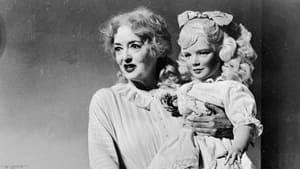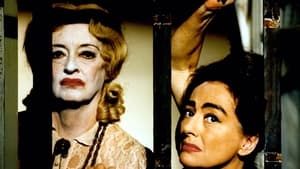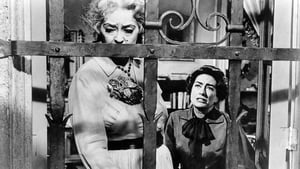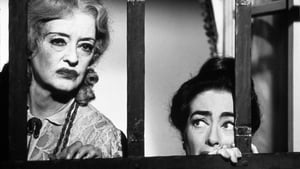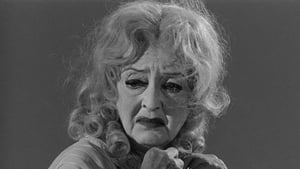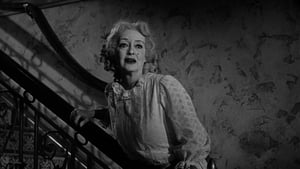Video Sources 0 Views
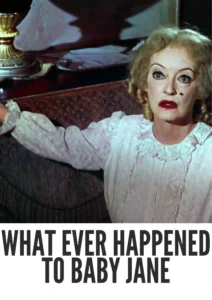
Synopsis

Brace yourself for a chilling and unforgettable cinematic experience with What Ever Happened to Baby Jane?, a psychological horror masterpiece from 1962, now stunningly colorized to amplify its unsettling atmosphere. Directed by Robert Aldrich and featuring iconic performances by Bette Davis and Joan Crawford, this film explores the twisted relationship between two aging sisters, trapped in a decaying Hollywood mansion. Perfect for fans of classic thrillers and those who appreciate powerhouse acting, this HD download offers a fresh and terrifying perspective on a legendary film.
What Ever Happened to Baby Jane? tells the story of Jane Hudson (Bette Davis), a former child star whose career was eclipsed by that of her beautiful and talented sister, Blanche (Joan Crawford). Years later, Blanche is a successful but disabled movie star, confined to a wheelchair after a mysterious accident, while Jane is a bitter and resentful recluse, caring for her sister in their dilapidated mansion.
As the years pass, Jane’s mental state deteriorates, and she begins to torment Blanche, subjecting her to psychological and physical abuse. Trapped and isolated, Blanche becomes increasingly desperate to escape her sister’s clutches, leading to a harrowing battle of wills.
The film is a masterclass in suspense, building tension with each scene as the sisters descend further into madness. With its dark themes, shocking imagery, and unforgettable performances, What Ever Happened to Baby Jane? remains a landmark in the horror genre.
The film features unforgettable performances from its lead actresses:
-
Bette Davis as Jane Hudson
-
Joan Crawford as Blanche Hudson
-
Victor Buono as Edwin Flagg
-
Maidie Norman as Elvira Stitt
-
Anna Lee as Mrs. Bates
What Ever Happened to Baby Jane? is a psychological horror film that explores themes of sibling rivalry, jealousy, and madness. It’s also considered part of the “Grand Dame Guignol” subgenre, known for its focus on aging actresses in macabre roles.
Released in 1962, What Ever Happened to Baby Jane? marked a resurgence of the gothic in Hollywood cinema. The film’s themes of decay, isolation, and psychological torment resonated with audiences, reflecting anxieties about aging, fame, and the changing landscape of the film industry. Its success paved the way for other films in the genre and cemented its place as a cultural touchstone.
This colorized version of What Ever Happened to Baby Jane? has been meticulously restored using advanced digital techniques, enhancing the visual impact while preserving the film’s original atmosphere of dread and suspense. The colorization process involved careful analysis of the grayscale tones in the original black and white footage, with particular attention paid to capturing the nuances of the actors’ performances and the film’s unsettling visuals. While the specific software used remains confidential, the methods employed included sophisticated algorithms for color palette selection, motion stabilization, and image refinement. This painstaking process brings a new dimension to the story, making it even more gripping for modern audiences. While the decision to colorize classic films is always a subject of debate, it introduces these films to a broader audience, ensuring their enduring legacy for generations to come.
-
: Robert Aldrich
-
: Lukas Heller
-
: the novel by Henry Farrell
-
: Ernest Haller
-
: Harold P. Warren
-
: Seven Arts Productions
-
: Warner Bros.
-
: 134 minutes
-
: MP4
-
: HD (1080p)
-
: Compatible with most devices, including smartphones, tablets, computers, and smart TVs.
What Ever Happened to Baby Jane? (1962) is widely regarded as a classic of the horror genre, praised for its brilliant performances, its chilling atmosphere, and its exploration of dark psychological themes. It remains a landmark in cinematic history, celebrated for its enduring impact and its ability to both disturb and fascinate audiences.
-
: What is What Ever Happened to Baby Jane? about?
-
A: What Ever Happened to Baby Jane? is a psychological horror film about the twisted relationship between two aging sisters, one a former child star and the other a disabled former movie star.
-
-
: Is What Ever Happened to Baby Jane? (1962) a well-known film?
-
A: Yes, What Ever Happened to Baby Jane? is considered a classic of the horror genre and is widely recognized for its iconic performances and its chilling story.
-
-
: Is this version of What Ever Happened to Baby Jane? colorized?
-
A: Yes, this version has been professionally colorized to enhance the viewing experience.
-
-
: What makes What Ever Happened to Baby Jane? interesting for classic film fans?
-
A: What Ever Happened to Baby Jane? features brilliant performances from Bette Davis and Joan Crawford, as well as a compelling and disturbing story that explores dark psychological themes.
-
-
: What is the download format?
-
A: The download format is MP4, which is compatible with most devices.
-
-
: What resolution is the download?
-
A: The resolution is HD (1080p), providing a high-quality viewing experience.
-
Watch What Ever Happened to Baby Jane? Today!
